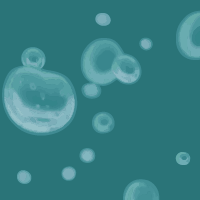Topic Menu
► Topic MenuTopic Editors


Insight into Liquid/Fluid Interfaces
Topic Information
Dear Colleagues,
The reduction of dimensions associated with the presence of a liquid/fluid interface lead to the emergence of specific equilibrium and dynamic features, which are far from those found in traditional 3D systems. Therefore, the understanding of the new physic aspects emerging at liquid/fluid interfaces in relation to bulk liquids is essential for exploiting the entire potential of liquid/fluid interfaces in material science. This is as liquid/fluid interfaces emerge as very good candidates for the design of new functional materials by confining different types of materials, e.g., polymers, surfactants, colloids, or even small molecules, by direct spreading or self-assembly from solutions. However, the development of the potential applications of liquid/fluid interfaces in the fabrication of materials requires a deep understanding of the physico-chemical foundations governing the formation of layers at liquid/fluid interfaces, as well as the characterization of the structures and properties of such interfacial films. This is of paramount importance as the behavior of interfaces is strongly affected by the external perturbations, including additives (e.g., pollutants), mechanical and thermal stresses, or magnetic and electric fields. These affect to the interfacial flows and the exchange of material between the adjacent phases and the interface, governing the equilibrium and dynamic properties of the liquid/fluid interface, which make the exploration of the theoretical and practical aspects involved in the creation of liquid/fluid interfaces essential. This Topic is devoted to the fundamental and applied aspects involved in the study of liquid/fluid interfaces, with the aim of providing a comprehensive perspective on the current status of the research field. It is expected that this will help to provide a bridge between the most fundamental knowledge on fluid interface, and the development of new applications based on it, closing the gap between different views.
Dr. Eduardo Guzmán
Dr. Armando Maestro
Topic Editors
Keywords
- interfaces
- confinement
- dynamics
- materials
- model systems
- applications
- flows
- rheology
Participating Journals
| Journal Name | Impact Factor | CiteScore | Launched Year | First Decision (median) | APC |
|---|---|---|---|---|---|

Coatings
|
3.4 | 4.7 | 2011 | 13.8 Days | CHF 2600 |

Colloids and Interfaces
|
2.4 | 4.8 | 2017 | 27.6 Days | CHF 1600 |

Gels
|
4.6 | 2.9 | 2015 | 11.1 Days | CHF 2600 |

Molecules
|
4.6 | 6.7 | 1996 | 14.6 Days | CHF 2700 |

Polymers
|
5.0 | 6.6 | 2009 | 13.7 Days | CHF 2700 |

MDPI Topics is cooperating with Preprints.org and has built a direct connection between MDPI journals and Preprints.org. Authors are encouraged to enjoy the benefits by posting a preprint at Preprints.org prior to publication:
- Immediately share your ideas ahead of publication and establish your research priority;
- Protect your idea from being stolen with this time-stamped preprint article;
- Enhance the exposure and impact of your research;
- Receive feedback from your peers in advance;
- Have it indexed in Web of Science (Preprint Citation Index), Google Scholar, Crossref, SHARE, PrePubMed, Scilit and Europe PMC.

